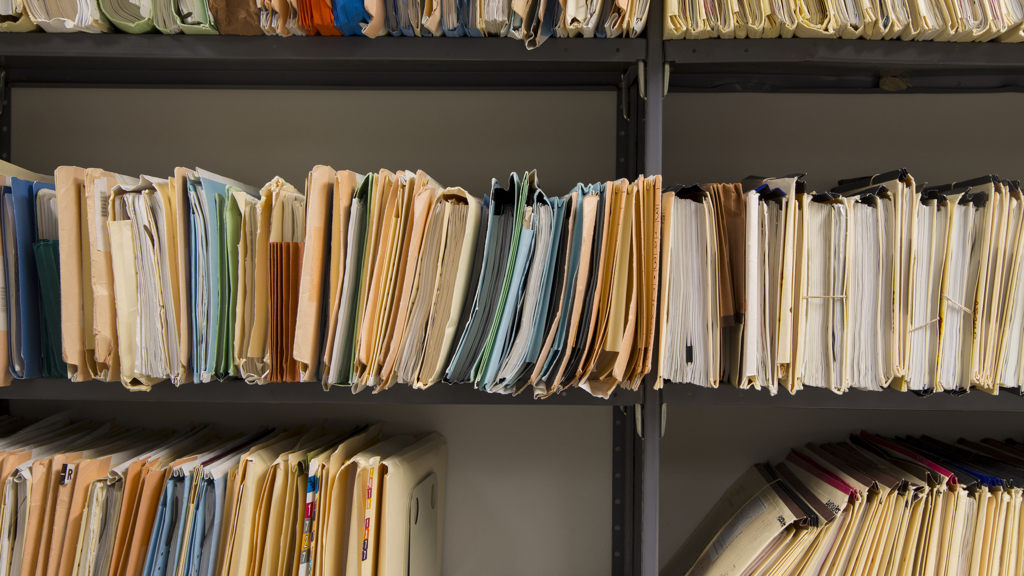Place the most recent to the left
Datum: 2017-03-13 14:25

A great thing about digital material is that you can do a search for it. Or rather, we can let the computer search for it, and either do something else or get another cup of coffee while waiting for it to locate what we are looking for.
Papers and other physical material is a whole other story. Sure, there are cumbersome indexes and search registers, but most of us try to organize the binders, the physical folders, the magazine holders and all those other places we store non-digital reference material somewhat logically.
It stands to reason that we ought to digitalize as much of our now physical materials as possible, but judging by what I see in the offices and organizations I visit in my work, most of us still have to deal with a considerable amount of papers.
What’s the perfect order?
But what can actually be considered being organized and what is the optimal order? What should we sort by? What are some reasonable and useful categories to categorize by? What should stand, lay or hang where? So many decisions. And so, oh so very, tempting to just put it all in a pile for now. But if we do, it will most likely remain there.
In favor of shortcuts
The Japanese economist Yukio Noguchi seems to have the same penchant as myself for making things as easy as possible. He has therefore invented a way of storing his papers that makes the decisions regarding what order and categorization that are best, obsolete. The method is simple and we can either apply it in its entirety or select the parts that suit us.
Do this
- The papers and documents you need to save somewhere and make easily accessible for later are put in folders. These need to be stiff paper folders, because they need to be able to stand on their ends. Hanging file folders in a storage cart works too. The folders can represent different projects, cases, subjects or whatever you would write on tabs in your binders.
- Place the folders on their ends in your bookshelf and write on the side that sticks out what the folder contain. Or, attach labels on the side of the folders and you will easily see what they contain. If you use hanging file folders in a set of drawers or a storage cart, you will indicate the contents on the labels sticking out from the folders as per usual. Do not try to think of a particular or perfect order to place the folders in, but just put them in the bookshelf or cart as you create them.
- When you have finished making folders and filling them with their appropriate contents, you just get back to work.
- When you need a folder, you take it out of the shelf or cart and work with it.
- When you are done using it for now, you put it back, but not where you took it. Instead you place it to the far left, meaning at the very end of all the folders on the left side. If you use hanging file folders, just place the folder so that it it now hanging closest to you.
As time passes the folders you use the most will be placed to the far left in the bookshelf (since you always place the most recently used folder at the left end of the row of folders). If you have not used a folder for a while, it will slowly make its way towards the right side. Eventually you will probably be able to store away the folders that have ended up at the far right end of the spectrum since you more or less never use them, and hence get more space for the materials that you do use. If you need a file that you used a few days ago, it will most likely be placed amongst the first ones on the left.
The same goes for binders
If you either can not or do not want to completely let go of your binders and only use folders, then just apply the same principle to the binders instead. After using a binder, you simply set it back on the left end. After a while you will have the binders you use the most gathered on the left end of the row, and will be able to put away those you never use which are now furthest to the right.
You could apply the method to all kinds of physical items, such as tools or other things you sometimes need to take out and use while working.
Less sorting
If you use Noguchi’s system of storage you will spend less time putting back what you took out, since you will not have to remember or look for the spot where you took the folder or binder from — you simply place it on the left side. The risk of making those treacherous ”will sort soon”-piles decreases and you will more likely have an empty desk more often, which in turn makes you less distracted by random items or documents laying about. You will find what you look for faster, since most of the times you are looking for something, it will simply be to your left.
Looking for things will sometimes the a bit longer, when you are looking for something you do not use very often, since it will then be somewhere to the right: but on the other hand, you will not have to look for these folders very often.
What is your method?
Have you organized your physical material by using some other clever method? Leave a comment and share your thoughts.




